Learning the names of flowers can be a great step into the world of botany or horticulture, whether you are at the start of your gardening journey and simply want to hear more about plants, or if you are practising for your RHS qualifications.
Alphabetical lists are a great way to learn names but also to learn about new plants too.
There are many plants that start with L which you may have already heard of. We have also tried to include some that are interesting but perhaps overlooked, hopefully this means you can learn about plant names but also learn about genera that you may never have heard of.
Let’s explore the world of plants together, through the letter L!
1. Lupinus
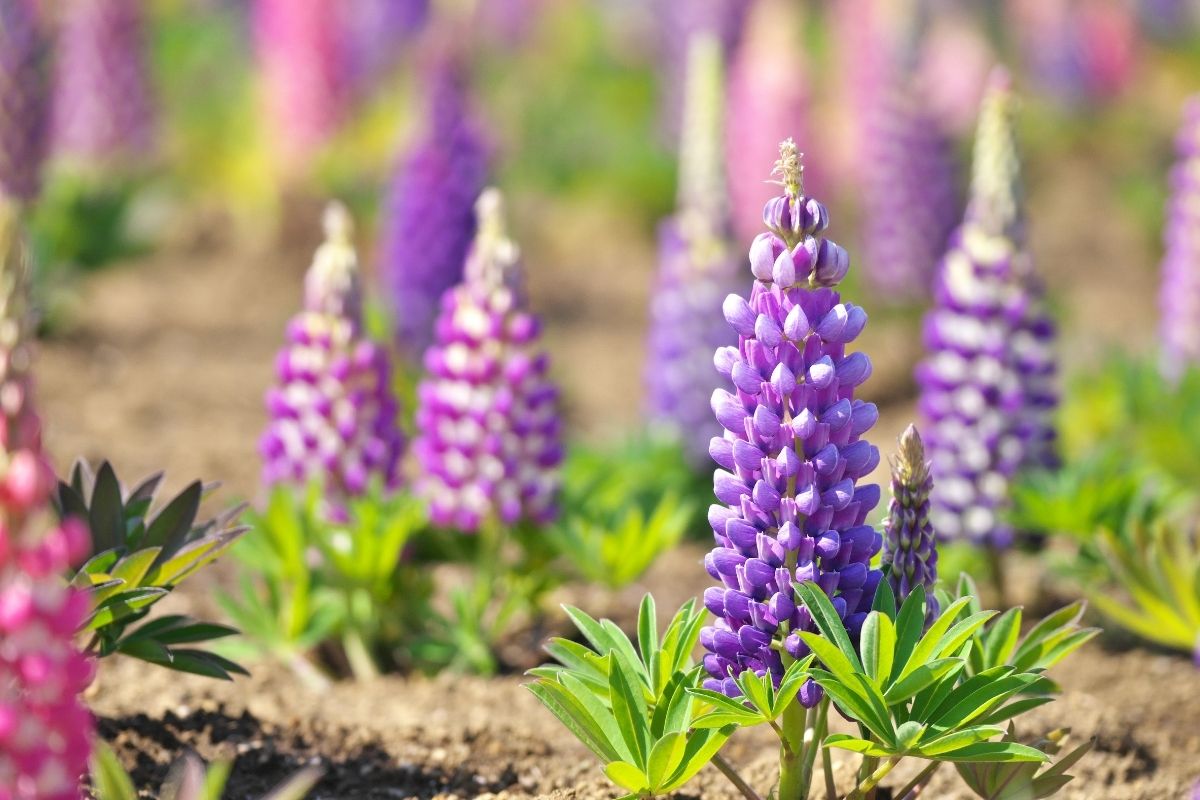
Lupinus are a genus of flowering perennial plants that are endemic to the North Americas as well as the temperate climate of other continents such as Europe and as far as Africa.
They are widely cultivated for many purposes but have mainly been cultivated in recent times for their inflorescence more than anything else.
As Lupinus is part of the Fabaceae family, also known as the legume or bean family, the same as the pea.
Reluctantly, they are often grown in the agricultural industry for their seeds which are comparable to soybean. This means they are a great source of livestock feed and are commonly grown solely for this use.
Although, as mentioned, the Lupinus has a magnificent and baudy flower that has drawn attention back to the plant as an ornamental flower, specifically the subspecies Lupinus polyphyllus and Lupinus arboreus.
The flower of these species is indicative of Lupinus’ decorative and unique prowess in horticulture. The flowers are produced onto an erect spike or panicle.
The flowers are around `1 – 2 inches and resemble the common pea flower. The whole affair forms into a cone shaped inferno of flowers. Lupinus can come in very different colors but often have a very striking and unique flower.
2. Layia (Tidy Tips)

The Layia is a fairly overlooked genus when it comes to unique inflorescence, as well as plants that start with L. American gardeners hear me out, the Layia is a flowering species of the daisy family which are native to North America, and many cultivars are endemic to California specifically.
So if you are a gardener of the Golden state, look on further than Layia.
The daisy-like flower is particularly unique, the flowerhead stands proudly on top of a glandular but strong stem.
The petals are numerous and occasionally overlap, but resemble the daisy for the most part. Their dainty and thin petals are often yellow but tipped with white spikes, hence their colloquial name ‘tidy tips’.
Other cultivars can have different color flowers that can often be spread apart, the cultivar can change greatly so have a look into them yourself if you like the sound of this summer bloomer.
Related: 27 Fascinating Types Of Jasmine Plants(Including Photos)
3. Lobelia
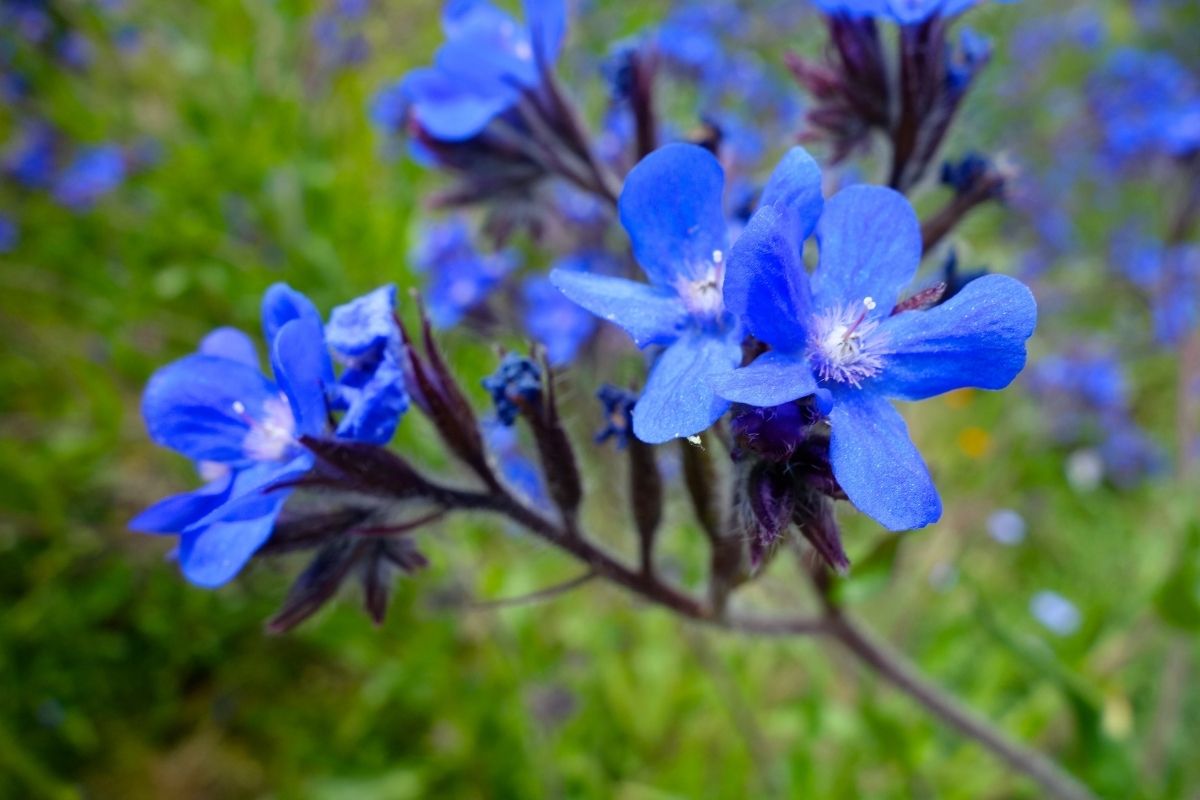
We have always found Lobelia to be one of the most pleasant to say out of all the flowering genera, and is one I have remembered ever since for the way it rolls off the tongue.
Beyond its lovely phonetics, the Lobelia is an interesting flowering genus worth looking into as it is as wide as it is unique.
The genus is particularly large, containing around 415 species. These species are quite vastly different and content perennial, annual and shrubby species – many of which are endemic to different climates.
The Lobelia was one of the genus originally discovered by the father of modern botanical nomenclature, Carl Linnaeus.
Gladly, the one thing that equalizes all these different subspecies and cultivars, is the Lobelia’s inflorescence. In most cases, the Lobelia has an alternate leafed flower that is tubular shaped, usually with five lobes.
Sometimes the upper two lobes are erect while the lower three are fanned out, but this will change slightly with each species. It’s worth exploring this genus for its variety but also its ornamental qualities, there is sure to be a variety endemic to your climate.
4. Lampranthus
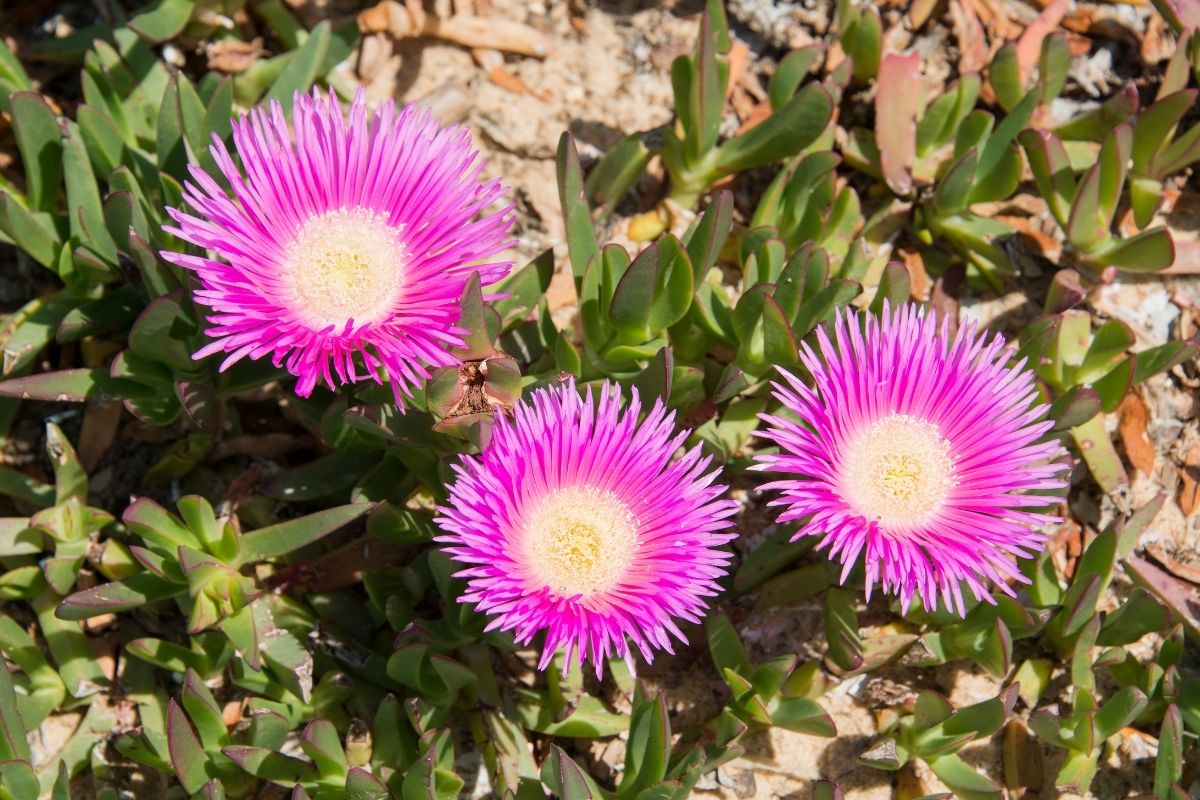
Another overlooked genus of flowering succulent plants that might just be perfect for your garden. Lampranthus translates in the Greek language to ‘shining flowers’ and is a good description of these large and showy flowers.
Within the genus there is much variation in terms of flower color but much of the flower morphology stays the same.
The flower is mainly found in the shrubby habitats of South Africa often called the ‘Fynobos’, but don’t fear they easily acclimate to most temperate environments, especially in the States.
This genus often flowers in many different colors depending on the cultivar, many of which are cultivated for their ornamental beauty. The petals are often very bright and colorful but generally quite thin and long.
The petals circle the sunflower-like head that is of particular interest to bees and other pollinators. Occasionally, with the right genetics, the petals can be bi-colored and change with different exposure to the sun.
5. Leucanthemum
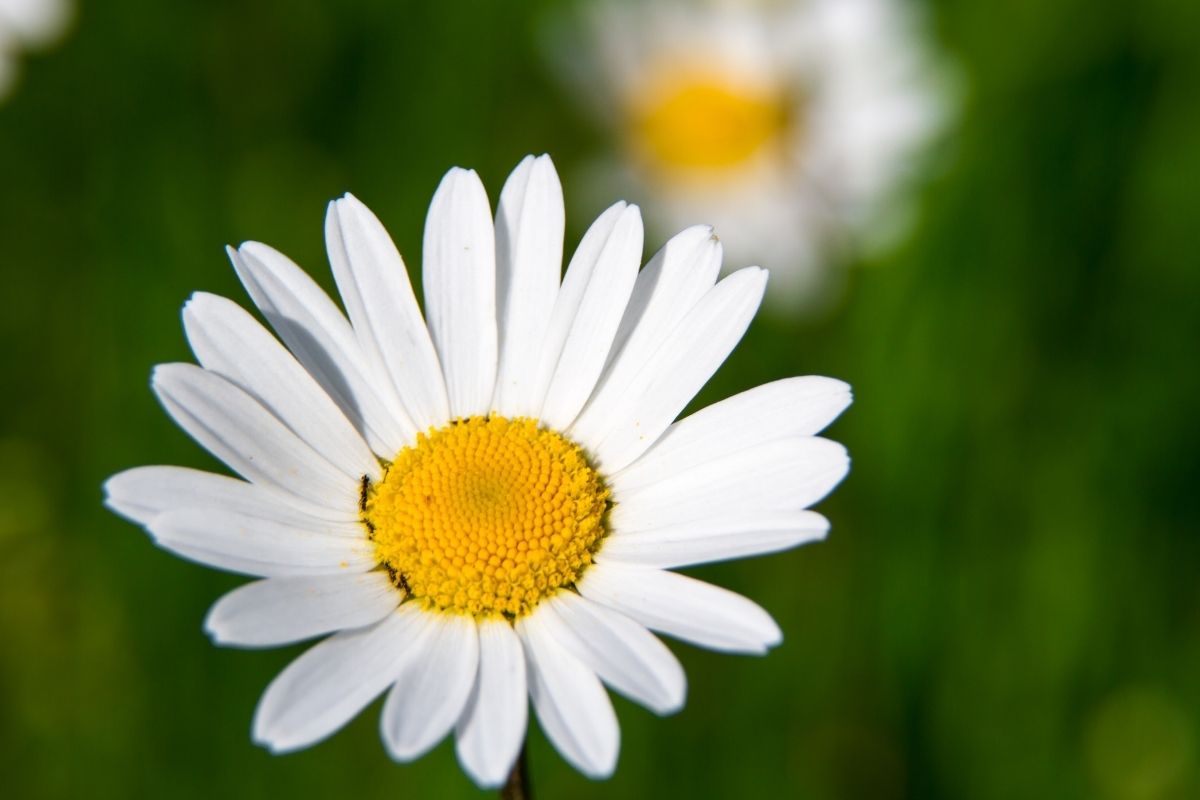
While you may have seen a Leucanthemum before, it’s latin nomenclature is rarely used. As the Leucanthemum is part of the Asteraceae family, many people chose the non botanical name ‘daisy’ which is often used to describe any flower within the Asteraceae family.
Yet, when people say ‘daisy’ and specifically refer to the English ‘daisy’, they are likely referring to the Leucanthemum.
Leucanthemum produce one stem that can potentially reach two metres depending on the species, but commonly reaches around 3 – 5 feet. The stem can branch into a pair or triplet of stems that each bear their own flower head.
The Leucanthemum often has many petals on the head that can differ in number depending on cultivar or species.
6. Libertia
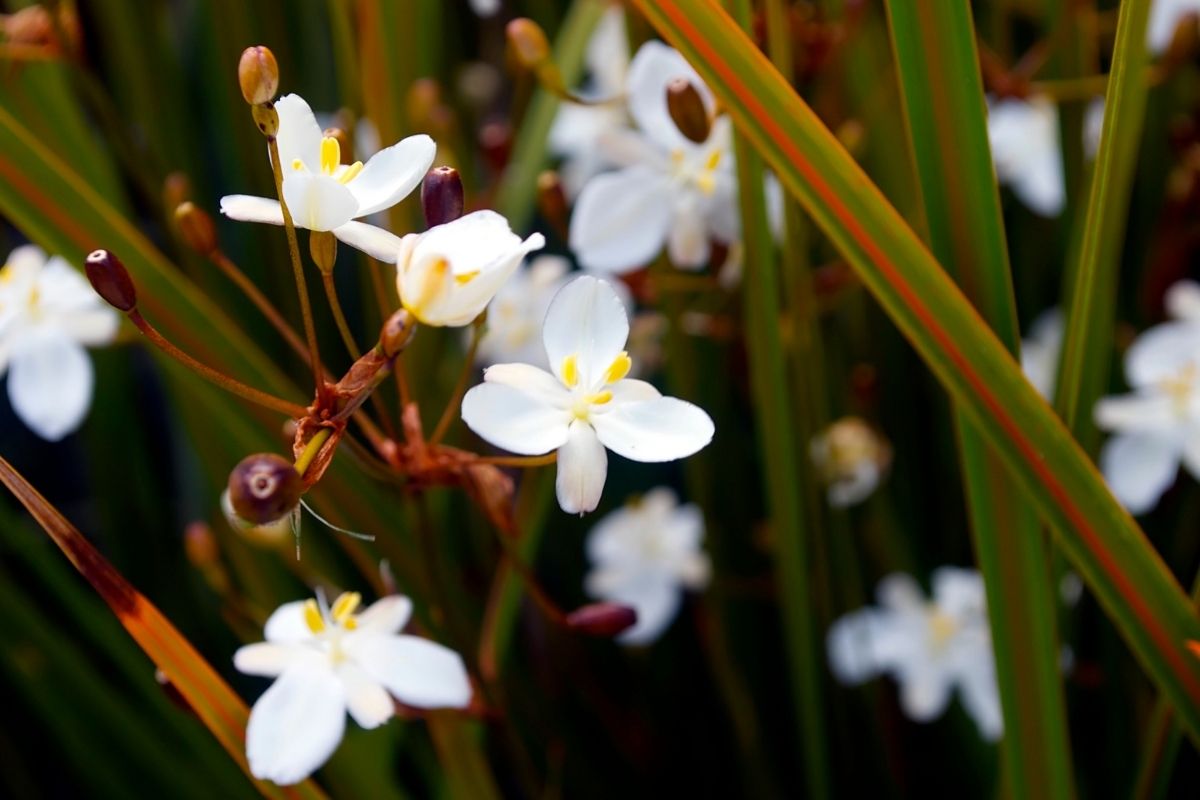
This is an interesting genus of monocotyledonous plant within the Iridiceae family. Monocotyledonous plants, or ‘monocots, are a flowering type of grass or grass-like plant. This is relatively rare as grass often doesn’t flower apart from these examples.
Many of the species are recognized as herbaceous or evergreen perennials. The flowers of the genus often bloom in the early spring which is one reason they are cultivated by horticulturists.
Their flowers are rather similar to Lilies, coming from the same family, and result in the plant being cultivated for ornamental uses.
The leaves are herbaceous and often a basal green but can turn red or yellow depending on the sun’s exposure to the foliage, making them particularly horticulturally interesting.
Moreover, the flower itself is most commonly a snowy white. The petals often come in triads, and are layered with smaller triads of petals, usually in layered pairs.
The species Libertia chilensis has gained the RHS’ prestigious Award of Garden Merit which makes it of particular interest to horticulturists.
7. Lavandula (Lavender)

We couldn’t complete this list without mentioning perhaps the most recognized flower that starts with an L.
Lavender is one of the few plants that is directly from the ‘Old World’. It wasn’t introduced into England until the 1600s, but some of the first botanical records of lavandula date back to Roman times and likely way before this too.
Like the Lupinus, the flowers are birthed from whorls and become large towering spikes of flowers that are commonly a shade of color that has popularly become a shade of purple referred to as ‘lavender’ but can have much variety within this shade of purple.
Funnily, lavender is probably one of the oldest natural oils or medicines that is still used widely in the medical community and not extradited as ‘hermetic medicine’.
While there is an ornamental prowess to lavender’s flowers which are particularly beautiful, they are simultaneously cultivated for both their scent and their essential oil which can help induce sleep.
History of ornamental, medicinal, and aromatic cultivation dates back deep into the ‘Old World’ of botany, but they remain a seriously popular plant across the globe.
The Final Word
As you can see there are many plants that start with L which are unique and also common to most botanists’ memories.
There are a great variety of plants within this category of letters that are really worth learning about if you want to learn more about horticulture widely. There is a great amount of variation, from grasses to shrubs, to trees and succulents.
We think this category shows a great variety of genera including the common plants such as Landula and exploring some more unique plants like Layia.
We hope this article has given you some new ideas for your garden as well as a useful way to learn about different flowers and plants while also helpfully learning their Latin names.
This encyclopedic approach can be a helpful way to begin learning about different plants as well as their names, but also a way for botanical experts to learn more about their craft.
There are so many different plants with different names, some hard to remember, some easier, lists like this can be a really helpful way to engrain them into your memory and are accessible to experts and beginners.
Editor’s Recommendations
27 Amazing African Violet Plants (With Pictures)







